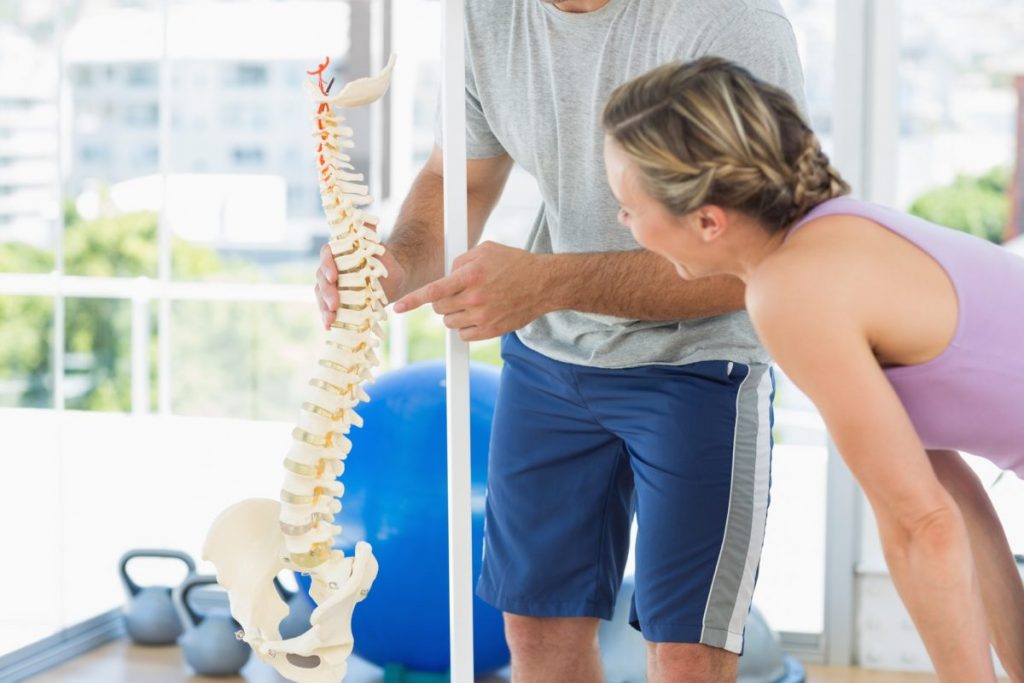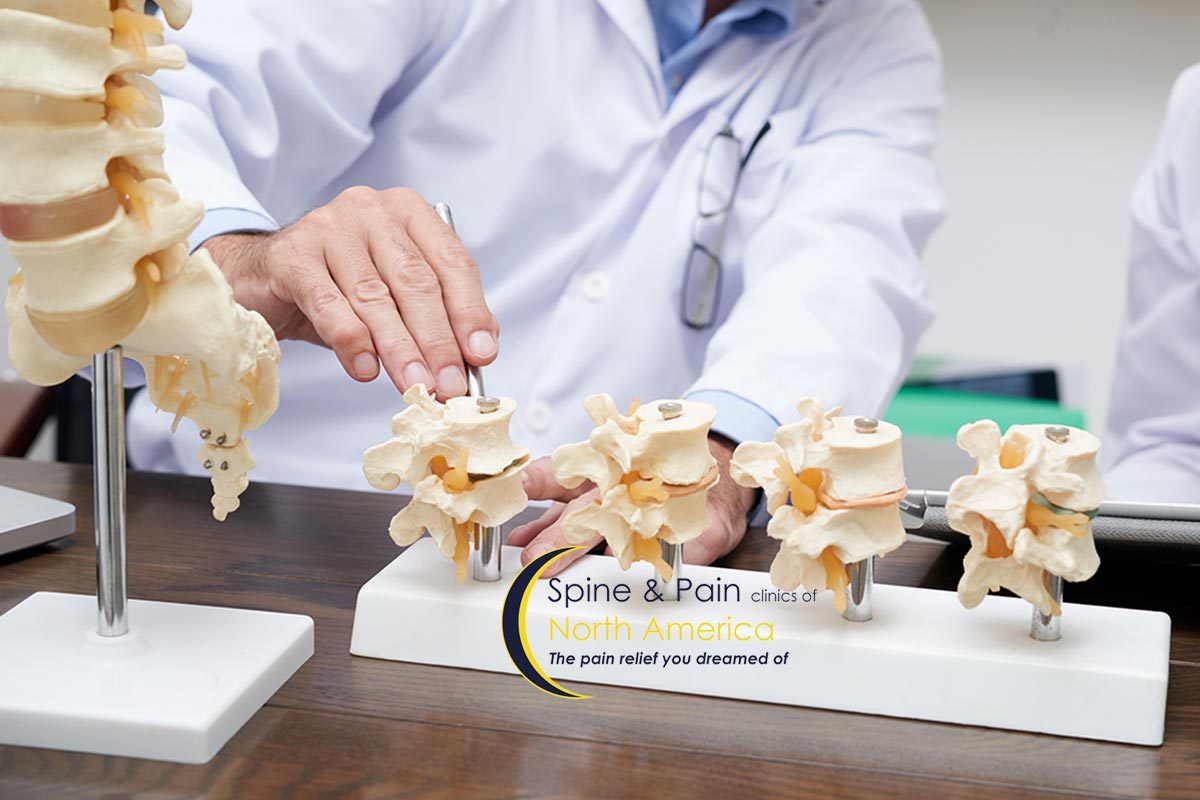Table of Contents
- Recovery Time After the Procedure
- What is the Kyphoplasty Recovery Time After Going Home?
- Are There Long-Term Restrictions?
- Kyphoplasty and Pain
- How Long Does Kyphoplasty Last?
- Enhancing Outcomes
Spinal compression fractures are painful and damage the structural integrity of the spine. The most common cause of vertebral compression fractures is osteoporosis, which weakens bones. Other common causes are falls and car accidents.
Kyphoplasty is a minimally invasive procedure in which the surgeon inserts bone cement into the compressed vertebrae body to restore stability. To achieve the best results and minimize the chance of complications, it is important to follow the physician’s post-procedure instructions throughout the recovery period.

Recovery Time Immediately After the Procedure
The first recovery period is 24 hours after the kyphoplasty procedure. It is performed under general anesthesia, so patients must rest for at least an hour after the procedure. The physician will ensure no reactions to the anesthesia or other complications develop before allowing the patient to go home.
The patient should rest at home for the first 24-48 hours. If the patient experiences mild pain, ice packs should be applied periodically, and over-the-counter pain medications should be taken. The bandages over the incision should be kept on for up to 48 hours.
How soon life after kyphoplasty returns to normal depends on several factors.
- The number of vertebrae involved in the procedure
- The patient’s age
- The patient’s general health
- Though uncommon, whether any indications of complications develop, like experiencing worse pain after kyphoplasty or an infection
What is the Kyphoplasty Recovery Time After Going Home?
Most people can return to some daily activities after 24-48 hours, but restrictions apply. They can do light exercises the doctor recommends, and many patients attend physical therapy sessions. Patients should avoid strenuous activities, twisting motions, high-impact exercises and heavy lifting. These restrictions apply for the first 1-6 weeks to give the vertebrae time to heal fully. However, activity levels can increase gradually during the six weeks.
Beyond the immediate post-operative care and the first day or two at home, any pain experienced should significantly subside. Many patients experience mobility improvement during the first week or two but should continue only with light activities. It may be tempting to do too much when the comfort level reaches a certain point, but it can take up to six weeks before life returns to normal.

Are There Long-Term Restrictions?
Total recovery time is usually completed within six weeks if no complications develop. Typically, there are no long-term restrictions after kyphoplasty. However, some patients will continue rehabilitation beyond six weeks, including physical therapy to strengthen back muscles and improve flexibility and mobility.
Kyphoplasty and Pain
The majority of kyphoplasty patients experience pain relief. In some cases, though, there is pain after kyphoplasty over time. A research study on back pain intensity experienced after the procedure found that 7.8% experienced postoperative moderate-severe pain. The risk factors for experiencing pain were due to a variety of reasons, including separated cement distribution and facet joint violations.
Experiencing muscle pain after kyphoplasty is a normal part of the recovery process. The muscle pain is mainly due to the needle’s insertion into the spine, which may irritate surrounding tissues. Also, the surgeon may manipulate the fractured vertebrae during the procedure, causing back muscle spasms.
There are cases in which kyphoplasty does not fully relieve the pain from the spinal compression fracture. If a complication develops, like the bone cement leaking onto the spinal cord, the pain may worsen. Though complications are possible, they are uncommon. Researchers analyzing almost two thousand cases of vertebroplasty (similar procedure) and kyphoplasty found that 2.7% experienced a minor complication, and 4.9% experienced a major complication. The patients experiencing complications had other health issues, like pneumonia and deep vein thrombosis.

How Long Does Kyphoplasty Last?
Research has found that kyphoplasty may reduce pain and improve mobility for up to three years. The long-term risk of developing new spinal compression fractures after kyphoplasty is reduced compared to people who choose not to have the procedure. It is important to note that while kyphoplasty can provide significant relief, it is not a guarantee against future fractures. If the spinal compression is due to osteoporosis, the risk of new vertebral fractures also depends on how well the patient manages the disease.
Kyphoplasty is not a cure for osteoporosis, so bone loss may continue. However, the progression of the disease can be slowed through diet and exercise.
Enhancing Outcomes
Closely following the post-procedure instructions is crucial to kyphoplasty’s long-term success. This includes doing light exercises that the pain doctor recommends. This low-risk procedure can deliver significant pain relief and restore mobility. If any signs of complications develop, it is important to contact the doctor immediately. Most of all, do not try to shorten the kyphoplasty recovery time. Each person is unique, but the path to full recovery and long-term success requires patience while maintaining a positive attitude. Remember, active participation in the recovery process is critical to achieving the best possible outcome.
Sources
- https://www.ncbi.nlm.nih.gov/books/NBK525963/
- https://pubmed.ncbi.nlm.nih.gov/32507918/
- https://pmc.ncbi.nlm.nih.gov/articles/PMC9210253/
- https://www.jvir.org/article/S1051-0443(10)00019-9/abstract
